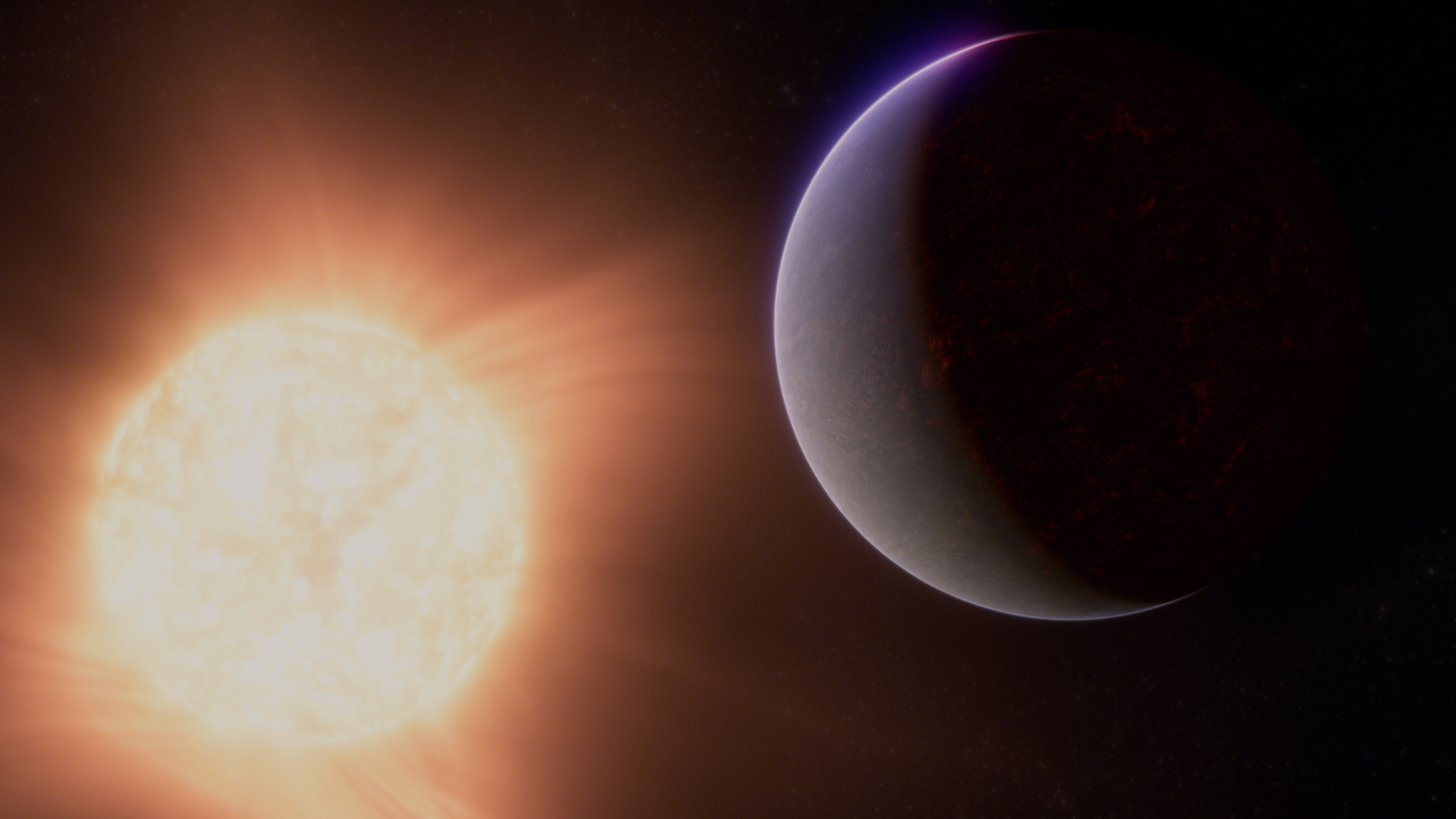7 Min Read NASA’s Webb Hints at Possible Atmosphere Surrounding Rocky Exoplanet 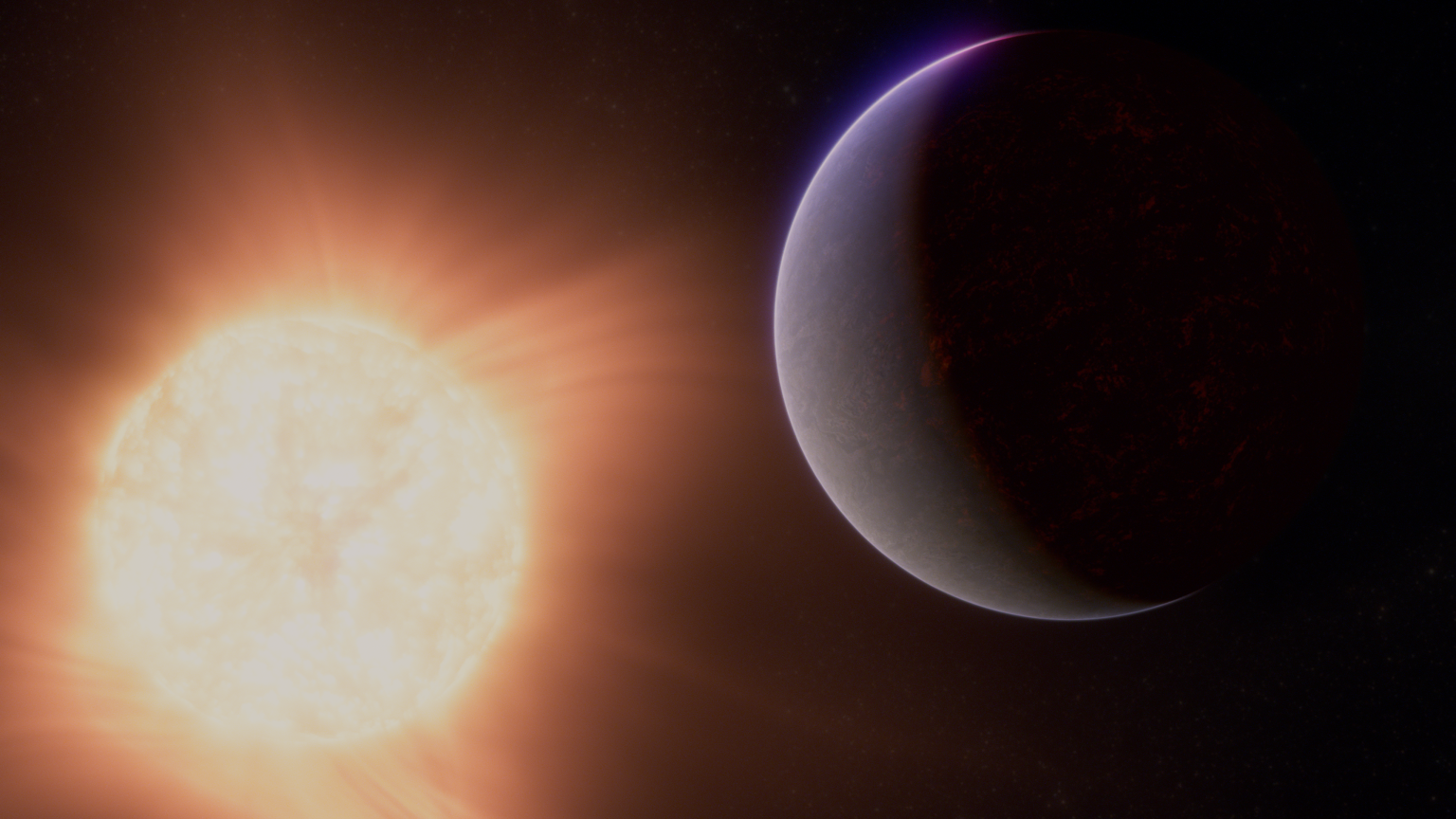 This artist’s concept shows what the exoplanet 55 Cancri e could look like based on observations from NASA’s James Webb Space Telescope. Researchers using NASA’s James Webb Space Telescope may have detected atmospheric gases surrounding 55 Cancri e, a hot rocky exoplanet 41 light-years from Earth. This is the best evidence to date for the existence of any rocky planet atmosphere outside our solar system.
This artist’s concept shows what the exoplanet 55 Cancri e could look like based on observations from NASA’s James Webb Space Telescope. Researchers using NASA’s James Webb Space Telescope may have detected atmospheric gases surrounding 55 Cancri e, a hot rocky exoplanet 41 light-years from Earth. This is the best evidence to date for the existence of any rocky planet atmosphere outside our solar system.
Renyu Hu from NASA’s Jet Propulsion Laboratory (JPL) in Pasadena, California, is lead author on a paper published today in Nature. “Webb is pushing the frontiers of exoplanet characterization to rocky planets,” Hu said. “It is truly enabling a new type of science.”
Super-Hot Super-Earth 55 Cancri e 55 Cancri e (image below, details/download), also known as Janssen, is one of five known planets orbiting the Sun-like star 55 Cancri, in the constellation Cancer. With a diameter nearly twice that of Earth and density slightly greater, the planet is classified as a super-Earth: larger than Earth, smaller than Neptune, and likely similar in composition to the rocky planets in our solar system.
To describe 55 Cancri e as “rocky,” however, could leave the wrong impression. The planet orbits so close to its star (about 1.4 million miles, or one-twenty-fifth the distance between Mercury and the Sun) that its surface is likely to be molten – a bubbling ocean of magma. With such a tight orbit, the planet is also likely to be tidally locked, with a dayside that faces the star at all times and a nightside in perpetual darkness.
In spite of numerous observations since it was discovered to transit in 2011, the question of whether or not 55 Cancri e has an atmosphere – or even could have one given its high temperature and the continuous onslaught of stellar radiation and wind from its star – has gone unanswered.
“I’ve worked on this planet for more than a decade,” said Diana Dragomir, an exoplanet researcher at the University of New Mexico and co-author on the study. “It’s been really frustrating that none of the observations we’ve been getting have robustly solved these mysteries. I am thrilled that we’re finally getting some answers!”
Unlike the atmospheres of gas giant planets, which are relatively easy to spot (the first was detected by NASA’s Hubble Space Telescope more than two decades ago), thinner and denser atmospheres surrounding rocky planets have remained elusive.
Previous studies of 55 Cancri e using data from NASA’s now-retired Spitzer Space Telescope suggested the presence of a substantial atmosphere rich in volatiles (molecules that occur in gas form on Earth) like oxygen, nitrogen, and carbon dioxide. But researchers could not rule out another possibility: that the planet is bare, save for a tenuous shroud of vaporized rock, rich in elements like silicon, iron, aluminum, and calcium. “The planet is so hot that some of the molten rock should evaporate,” explained Hu.
Image: Super-Earth Exoplanet 55 Cancri e (Artist’s Concept) 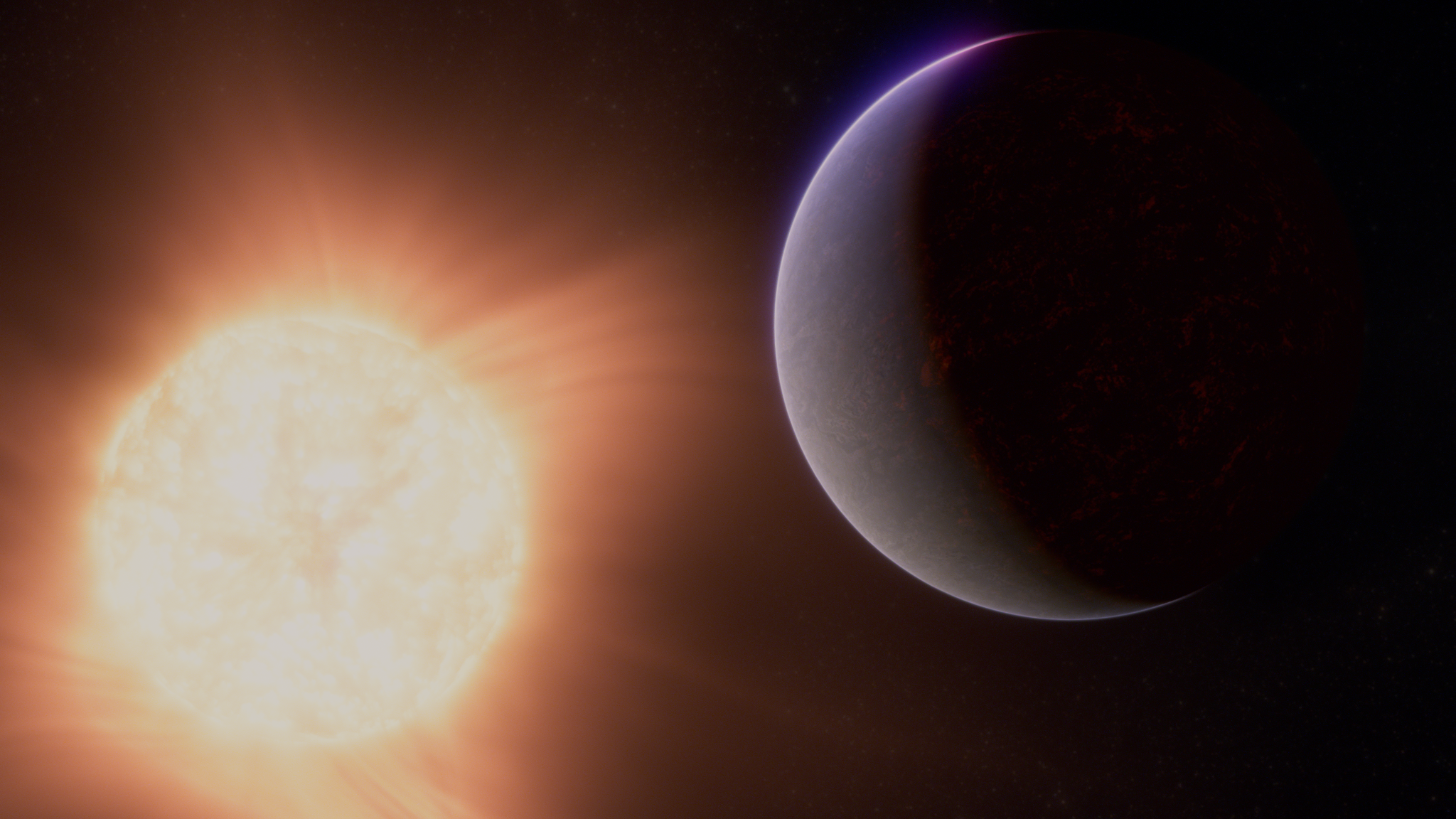 This artist’s concept shows what the exoplanet 55 Cancri e could look like based on observations from NASA’s James Webb Space Telescope and other observatories. Observations from Webb’s NIRCam and MIRI suggest that the planet may be surrounded by an atmosphere rich in carbon dioxide (CO2) or carbon monoxide (CO). Researchers think the gases that make up the atmosphere could have bubbled out of an ocean of magma that is thought to cover the planet’s surface. Measuring Subtle Variations in Infrared Colors To distinguish between the two possibilities, the team used Webb’s NIRCam (Near-Infrared Camera) and MIRI (Mid-Infrared Instrument) to measure 4- to 12-micron infrared light coming from the planet.
This artist’s concept shows what the exoplanet 55 Cancri e could look like based on observations from NASA’s James Webb Space Telescope and other observatories. Observations from Webb’s NIRCam and MIRI suggest that the planet may be surrounded by an atmosphere rich in carbon dioxide (CO2) or carbon monoxide (CO). Researchers think the gases that make up the atmosphere could have bubbled out of an ocean of magma that is thought to cover the planet’s surface. Measuring Subtle Variations in Infrared Colors To distinguish between the two possibilities, the team used Webb’s NIRCam (Near-Infrared Camera) and MIRI (Mid-Infrared Instrument) to measure 4- to 12-micron infrared light coming from the planet.
Although Webb cannot capture a direct image of 55 Cancri e, it can measure subtle changes in light from the system as the planet orbits the star.
By subtracting the brightness during the secondary eclipse (image below, details/download), when the planet is behind the star (starlight only), from the brightness when the planet is right beside the star (light from the star and planet combined), the team was able to calculate the amount of various wavelengths of infrared light coming from the dayside of the planet.
This method, known as secondary eclipse spectroscopy, is similar to that used by other research teams to search for atmospheres on other rocky exoplanets, like TRAPPIST-1 b.
Image: Super-Earth Exoplanet 55 Cancri e (MIRI Secondary Eclipse Light Curve) 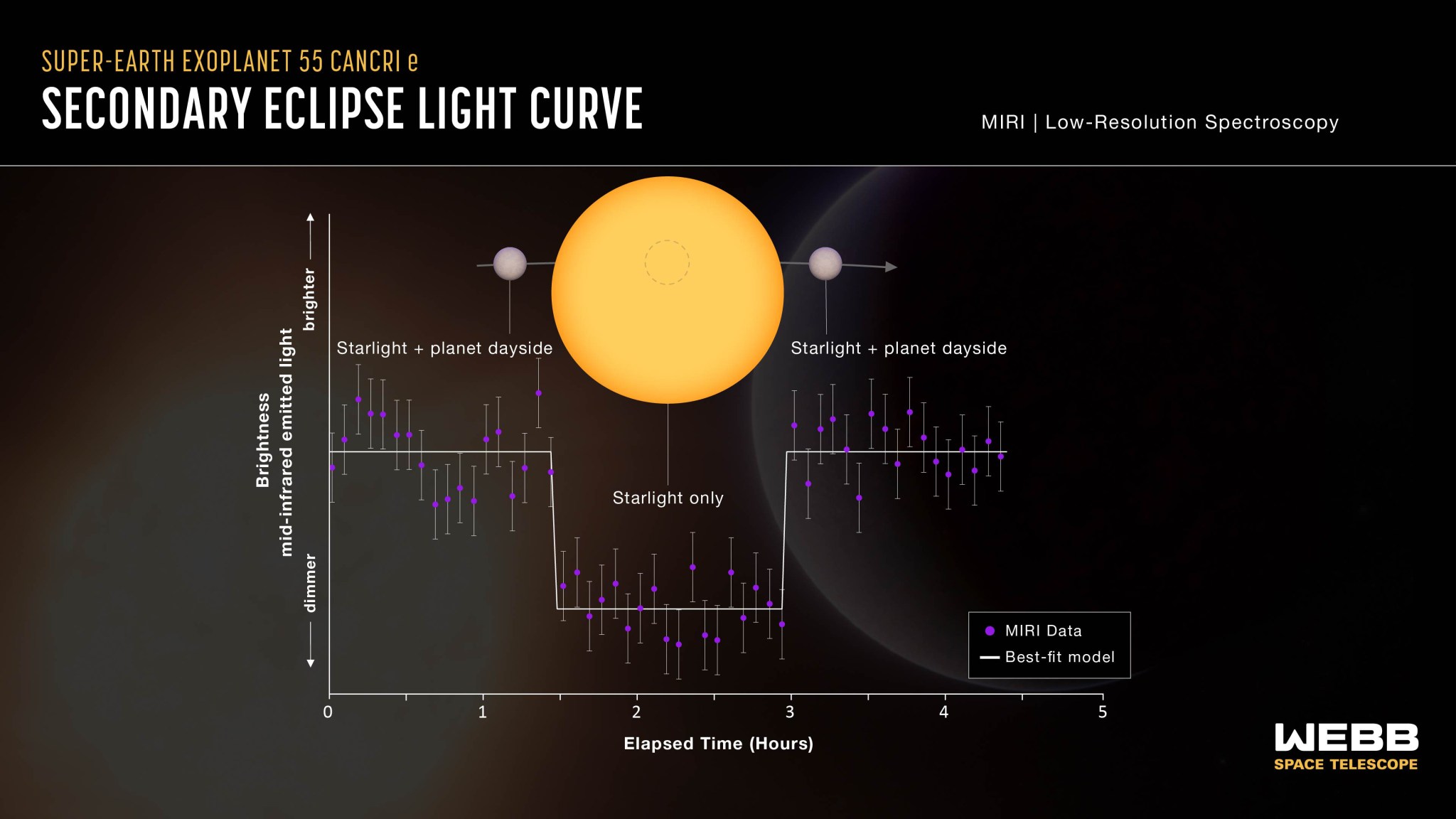 A light curve of 7.5- to 11.8-micron light captured by NASA’s James Webb Space Telescope’s MIRI (Mid-Infrared Instrument) in March 2023 shows the decrease in brightness of the 55 Cancri system as the rocky planet 55 Cancri e moves behind the star, a phenomenon known as a secondary eclipse. The amount of mid-infrared light given off by the planet (the difference in brightness between the star-and-planet combined and the star on its own) indicates that the planet’s dayside temperature is about 2,800 degrees Fahrenheit. This temperature, which is low compared to a similar planet with no atmosphere, indicates that heat is being distributed from the dayside to the nightside of the planet, possibly by a volatile-rich atmosphere.
A light curve of 7.5- to 11.8-micron light captured by NASA’s James Webb Space Telescope’s MIRI (Mid-Infrared Instrument) in March 2023 shows the decrease in brightness of the 55 Cancri system as the rocky planet 55 Cancri e moves behind the star, a phenomenon known as a secondary eclipse. The amount of mid-infrared light given off by the planet (the difference in brightness between the star-and-planet combined and the star on its own) indicates that the planet’s dayside temperature is about 2,800 degrees Fahrenheit. This temperature, which is low compared to a similar planet with no atmosphere, indicates that heat is being distributed from the dayside to the nightside of the planet, possibly by a volatile-rich atmosphere.
Cooler than Expected The first indication that 55 Cancri e could have a substantial atmosphere came from temperature measurements based on its thermal emission (image below, details/download), or heat energy given off in the form of infrared light. If the planet is covered in dark molten rock with a thin veil of vaporized rock or no atmosphere at all, the dayside should be around 4,000 degrees Fahrenheit (~2,200 degrees Celsius).
“Instead, the MIRI data showed a relatively low temperature of about 2,800 degrees Fahrenheit [~1540 degrees Celsius],” said Hu. “This is a very strong indication that energy is being distributed from the dayside to the nightside, most likely by a volatile-rich atmosphere.” While currents of lava can carry some heat around to the nightside, they cannot move it efficiently enough to explain the cooling effect.
When the team looked at the NIRCam data, they saw patterns consistent with a volatile-rich atmosphere. “We see evidence of a dip in the spectrum between 4 and 5 microns — less of this light is reaching the telescope,” explained co-author Aaron Bello-Arufe, also from NASA JPL. “This suggests the presence of an atmosphere containing carbon monoxide or carbon dioxide, which absorb these wavelengths of light.” A planet with no atmosphere or an atmosphere consisting only of vaporized rock would not have this specific spectral feature.
“We’ve spent the last ten years modelling different scenarios, trying to imagine what this world might look like,” said co-author Yamila Miguel from the Leiden Observatory and the Netherlands Institute for Space Research (SRON). “Finally getting some confirmation of our work is priceless!”
Image: Super-Earth Exoplanet 55 Cancri e (NIRCam + MIRI Emission Spectrum) 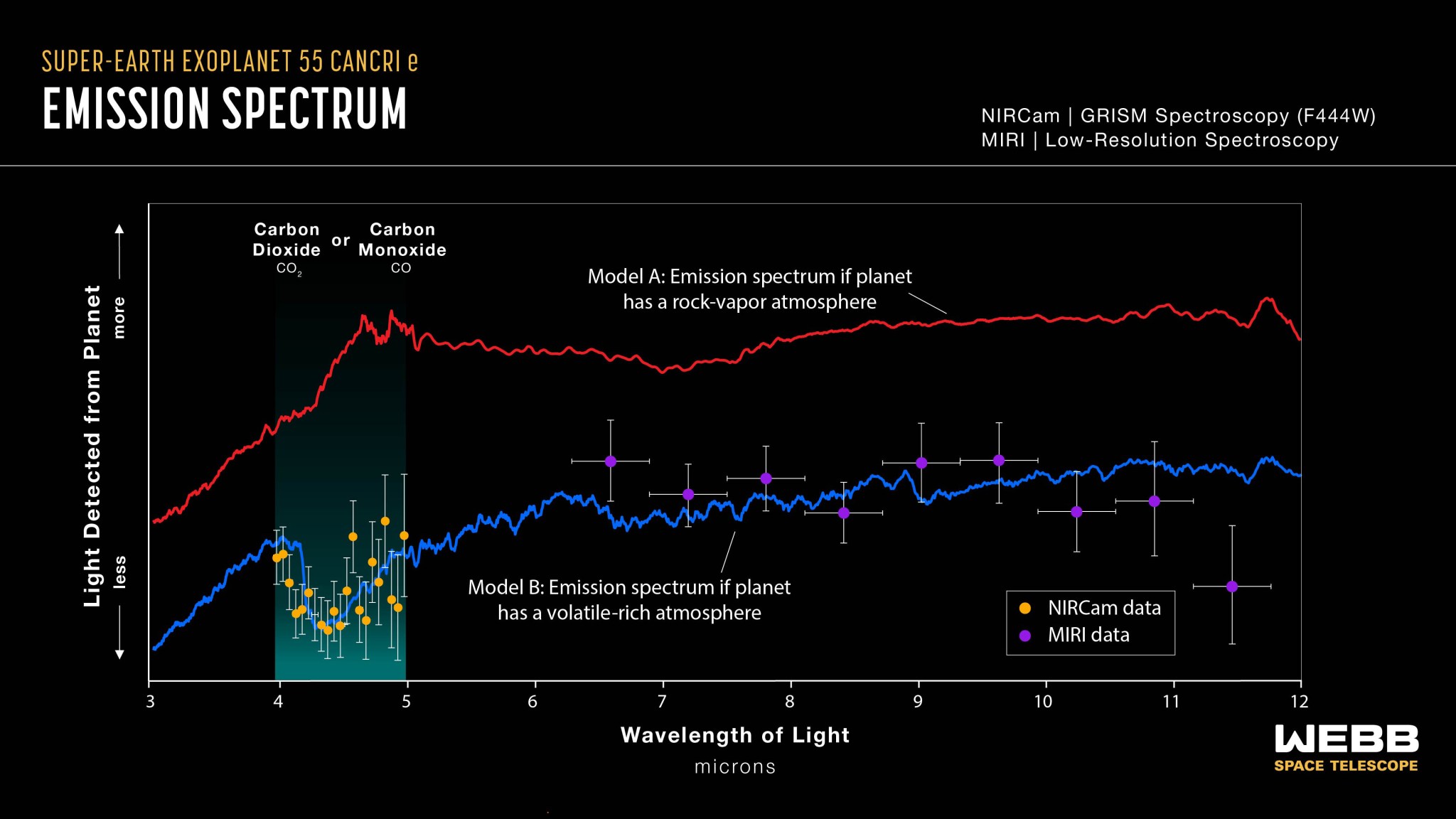 A thermal emission spectrum of the super-Earth exoplanet 55 Cancri e, captured by NASA’s James Webb Space Telescope’s NIRCam (Near-Infrared Camera) GRISM Spectrometer (F444W) and MIRI (Mid-Infrared Instrument) Low-Resolution Spectrometer, shows that the planet may be surrounded by an atmosphere rich in carbon dioxide or carbon monoxide and other volatiles, not just vaporized rock. Bubbling Magma Ocean The team thinks that the gases blanketing 55 Cancri e would be bubbling out from the interior, rather than being present ever since the planet formed. “The primary atmosphere would be long gone because of the high temperature and intense radiation from the star,” said Bello-Arufe. “This would be a secondary atmosphere that is continuously replenished by the magma ocean. Magma is not just crystals and liquid rock; there’s a lot of dissolved gas in it, too.”
A thermal emission spectrum of the super-Earth exoplanet 55 Cancri e, captured by NASA’s James Webb Space Telescope’s NIRCam (Near-Infrared Camera) GRISM Spectrometer (F444W) and MIRI (Mid-Infrared Instrument) Low-Resolution Spectrometer, shows that the planet may be surrounded by an atmosphere rich in carbon dioxide or carbon monoxide and other volatiles, not just vaporized rock. Bubbling Magma Ocean The team thinks that the gases blanketing 55 Cancri e would be bubbling out from the interior, rather than being present ever since the planet formed. “The primary atmosphere would be long gone because of the high temperature and intense radiation from the star,” said Bello-Arufe. “This would be a secondary atmosphere that is continuously replenished by the magma ocean. Magma is not just crystals and liquid rock; there’s a lot of dissolved gas in it, too.”
While 55 Cancri e is far too hot to be habitable, researchers think it could provide a unique window for studying interactions between atmospheres, surfaces, and interiors of rocky planets, and perhaps provide insights into the early conditions of Earth, Venus, and Mars, which are thought to have been covered in magma oceans far in the past. “Ultimately, we want to understand what conditions make it possible for a rocky planet to sustain a gas-rich atmosphere: a key ingredient for a habitable planet,” said Hu.
This research was conducted as part of Webb’s General Observers (GO) Program 1952. Analysis of additional secondary eclipse observations of 55 Cancri e are currently in progress.
The James Webb Space Telescope is the world’s premier space science observatory. Webb is solving mysteries in our solar system, looking beyond to distant worlds around other stars, and probing the mysterious structures and origins of our universe and our place in it. Webb is an international program led by NASA with its partners, ESA (European Space Agency) and the Canadian Space Agency.
Downloads Right click the images in this article to open a larger version in a new tab/window.
Download full resolution images for this article from the Space Telescope Science Institute.
The research results are published in Nature.
Media Contacts Laura Betz – laura.e.betz@nasa.gov, Rob Gutro – rob.gutro@nasa.gov
NASA’s Goddard Space Flight Center, Greenbelt, Md.
Margaret Carruthers mcarruthers@stsci.edu, Christine Pulliam – cpulliam@stsci.edu
Space Telescope Science Institute, Baltimore, Md.
Related Information What is an Exoplanet?
VIDEO: How do we learn about a planets Atmosphere?
55 Cancri e exoplanet and 55 Cancri system simulated in 3d
Webb’s Impact on Exoplanet Research
More Webb News – https://science.nasa.gov/mission/webb/latestnews/
More Webb Images – https://science.nasa.gov/mission/webb/multimedia/images/
Webb Mission Page – https://science.nasa.gov/mission/webb/
Related For Kids What is a exoplanet?
En Español Para Niños : Qué es una exoplaneta?
Keep Exploring Related Topics James Webb Space Telescope
Webb is the premier observatory of the next decade, serving thousands of astronomers worldwide. It studies every phase in the…

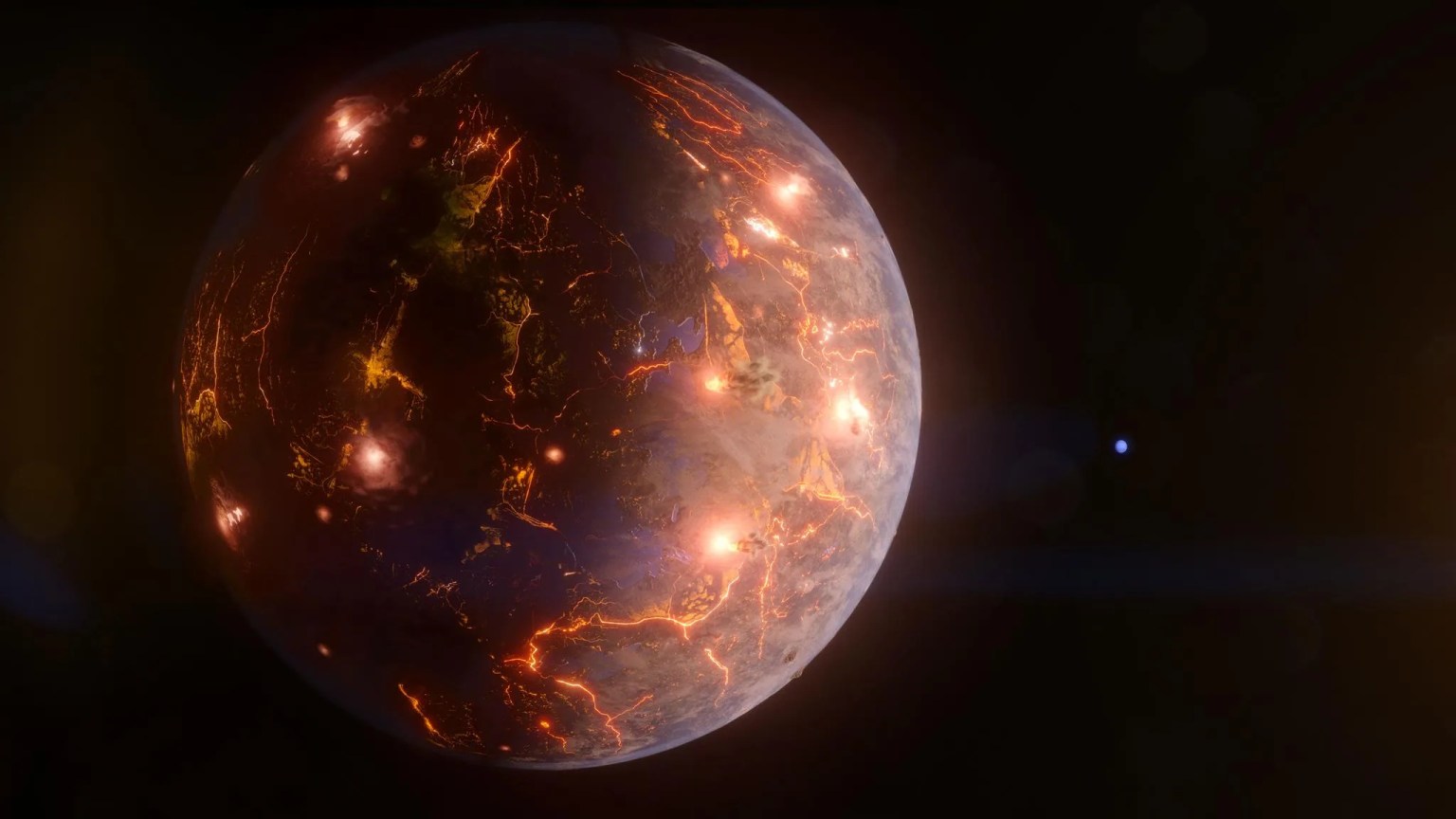
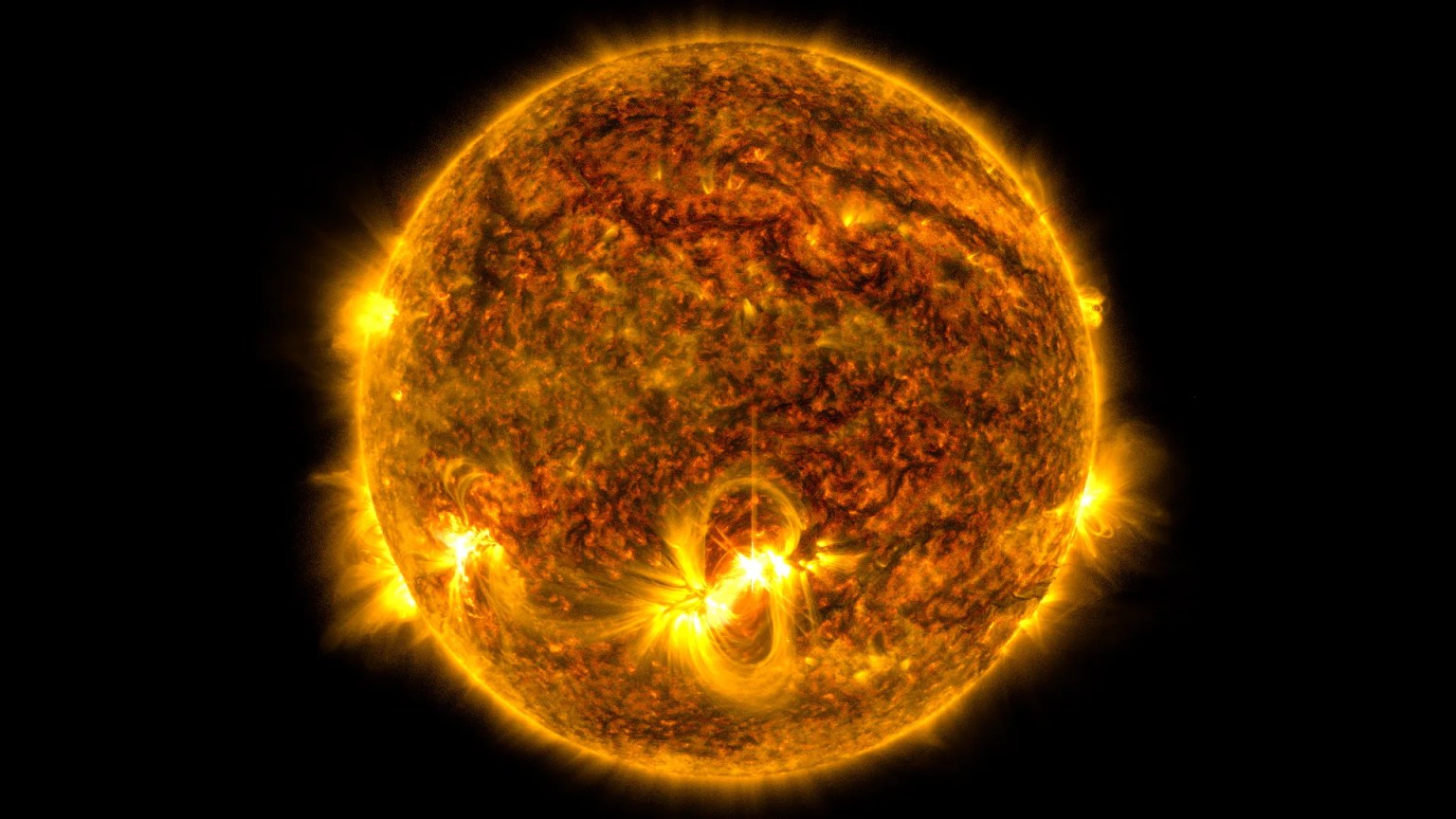

Details Last Updated May 08, 2024 Editor Stephen Sabia Contact Laura Betz laura.e.betz@nasa.gov Related Terms Astrophysics Exoplanet Atmosphere Exoplanet Science Exoplanets James Webb Space Telescope (JWST) Science & Research Studying Exoplanets Super-Earth Exoplanets The Universe

